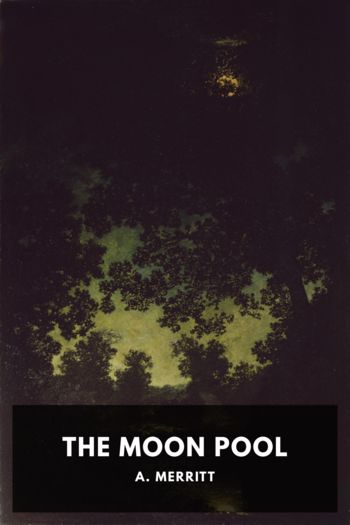Short Fiction, H. P. Lovecraft [top android ebook reader .txt] 📗

- Author: H. P. Lovecraft
Book online «Short Fiction, H. P. Lovecraft [top android ebook reader .txt] 📗». Author H. P. Lovecraft
The road now rose abruptly, till we finally reached our place of transfer between the trolley station and the Mena House Hotel. Abdul Reis, who capably purchased our Pyramid tickets, seemed to have an understanding with the crowding, yelling, and offensive Bedouins who inhabited a squalid mud village some distance away and pestiferously assailed every traveler; for he kept them very decently at bay and secured an excellent pair of camels for us, himself mounting a donkey and assigning the leadership of our animals to a group of men and boys more expensive than useful. The area to be traversed was so small that camels were hardly needed, but we did not regret adding to our experience this troublesome form of desert navigation.
The Pyramids stand on a high rock plateau, this group forming next to the northernmost of the series of regal and aristocratic cemeteries built in the neighborhood of the extinct capital Memphis, which lay on the same side of the Nile, somewhat south of Giza; and which flourished between 3400 and 2000 BC The greatest pyramid, which lies nearest the modern road, was built by King Cheops or Khufu about 2800 BC, and stands more than 450 feet in perpendicular height. In a line southwest from this are successively the Second Pyramid, built a generation later by King Khephren, and though slightly smaller, looking even larger because set on higher ground, and the radically smaller Third Pyramid of King Mycerinus, built about 2700 BC Near the edge of the plateau and due east of the Second Pyramid, with a face probably altered to form a colossal portrait of Khepvhren, its royal restorer, stands the monstrous Sphinx—mute, sardonic, and wise beyond mankind and memory.
Minor pyramids and the traces of ruined minor pyramids are found in several places, and the whole plateau is pitted with the tombs of dignitaries of less than royal rank. These latter were originally marked by mastabas, or stone bench-like structures above the deep burial shafts, as found in other Memphian cemeteries and exemplified by Perneb’s Tomb in the Metropolitan Museum of New York. At Giza, however, all such risible things have been swept away by time and pillage; and only the rock-hewn shafts, either sand-filled or cleared out by archaeologists, remain to attest their former existence. Connected with each tomb was a chapel in which priests and relatives offered food and prayer to the hovering ka or vital principle of the deceased. The small tombs have their chapels contained in their stone mastabas or superstructures, but the mortuary chapels of the pyramids, where regal Pharaohs lay, were separate temples, each to the east of its corresponding pyramid, and connected by a causeway to a massive gate-chapel or propylon at the edge of the rock plateau.
The gate-chapel leading to the Second Pyramid, nearly buried in the drifting sands, yawns subterraneously southeast of the Sphinx. Persistent tradition dubs it the Temple of the Sphinx; and it may perhaps be rightly called such if the Sphinx indeed represents the Second Pyramid’s builder Khephren. There are unpleasant tales of the Sphinx before Khephren—but whatever its elder features were, the monarch replaced them with his own that men might look at the colossus without fear. It was in the great gateway-temple that the life-size diorite statue of Khephren now in the Cairo museum was found; a statue before which I stood in awe when I beheld it. Whether the whole edifice is now excavated I am not certain, but in 1910 most of it was below ground, with the entrance heavily barred at night. Germans were in charge of the work, and the war or other things may have stopped them. I would give much, in view of my experience and of certain Bedouin whisperings discredited or unknown in Cairo, to know what has developed in connection with a certain well in a transverse gallery where statues of the Pharaoh were found in curious juxtaposition to the statues of baboons.
The road, as we traversed it on our camels that morning, curved sharply past the wooden police quarters, post office, drug store, and shops on the left, and plunged south and east in a complete bend that scaled the rock plateau and brought us face to face with the desert under the lee of the Great Pyramid. Past Cyclopean masonry we rode, rounding the eastern face and looking down ahead into a valley of minor pyramids beyond which the eternal Nile glistened to the east, and the eternal desert shimmered to the west. Very close loomed the three major pyramids, the greatest devoid of outer casing and showing its bulk of great stones, but the others retaining here and there the neatly fitted covering which had made them smooth and finished in their day.
Presently we descended toward the Sphinx, and sat silent beneath the spell of those terrible unseeing eyes. On the vast stone breast we faintly discerned the emblem of Re-Harakhte, for whose image the Sphinx was mistaken in a late dynasty; and though sand covered the tablet between the great paws, we recalled what Thutmosis IV inscribed thereon, and the dream he had when a prince. It was then that the smile of the Sphinx vaguely displeased us, and made us wonder about the legends of subterranean passages beneath the monstrous creature, leading down, down, to depths none might dare hint at—depths connected with mysteries older than the dynastic Egypt we excavate, and having a sinister relation to the persistence of abnormal, animal-headed gods in the ancient Nilotic pantheon. Then, too, it was I asked myself an idle question whose





Comments (0)